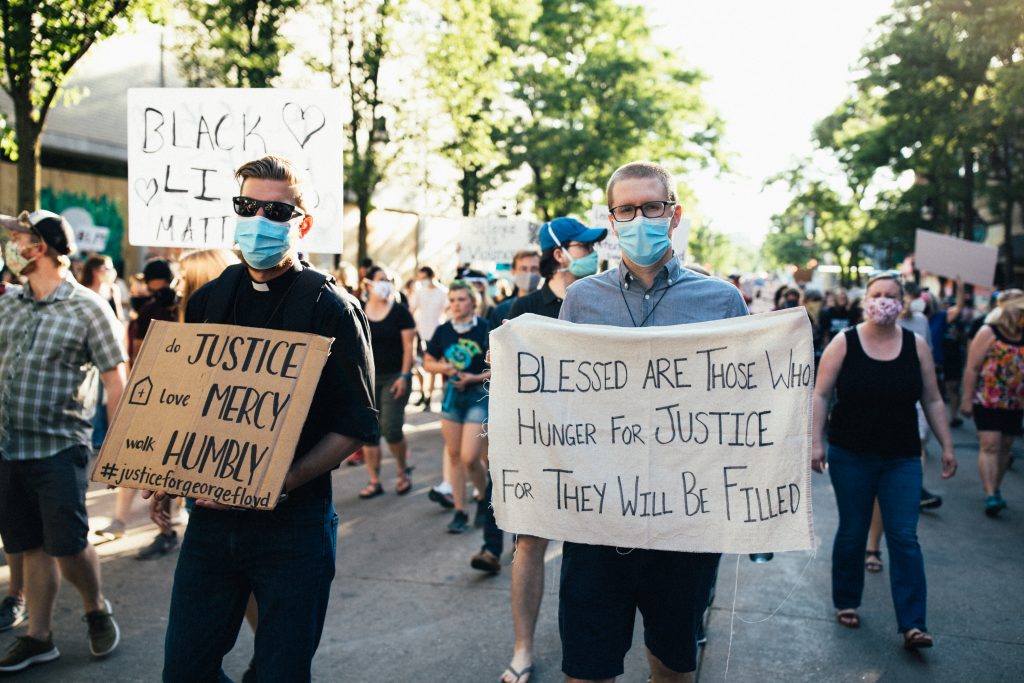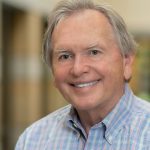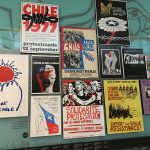Amid the present political turmoil and the heightened risks of civil violence, we feel called to take action to protect our democratic freedoms and the rights and dignity of all people. We are deeply concerned about the ongoing, baseless de-legitimation of the election and the violence it might instigate. Whatever the outcome of the current election, political polarization and the risks of violence will not suddenly disappear, nor will White supremacist groups and armed militias, or the threat of racially motivated police violence against people of color.
As we contend with these devastating realities, we are determined to seek change. Many of us are willing to take personal risks to stand in solidarity with those who are struggling nonviolently in Black Lives Matter, the Poor People’s Campaign and other movements for social justice. Our goal is to mobilize not only committed activists but a majority of the public to take a stand against violence and hatred. To win this fight, we must embody the principles of peaceful democracy we espouse.
Nonviolent protest works
During the unprecedented wave of social mobilization this past summer, about 93 percent of the protests for racial justice were peaceful. Maintaining and strengthening this commitment to effective action offers our best hope for achieving progress toward participatory democracy and social justice.
As demonstrated by Martin Luther King Jr., Cesar Chavez, Barbara Deming and many others, Gandhian nonviolence works by applying persistent, forceful, and often disruptive forms of social pressure to impede systems of oppression and attract the support of third parties. It seeks to make “good trouble” as Congressman John Lewis, the pioneering civil rights leader, put it. Nonviolent action is not the same as nonresistant pacifism, and it is certainly not passive. It is the most powerful and effective means available to oppressed people struggling for their rights.
As we commit ourselves to nonviolent action, we recognize that rioting often occurs in response to egregious acts of police brutality or insufferable conditions of structural oppression. Dr. King said “a riot is the language of the unheard.” If we deplore violence, he said, we must also deplore the police brutality and the systematic denial of economic and social opportunity that drive people to desperation. But King was also adamant in opposing the use of violent methods to achieve political change.
Evidence shows conclusively that nonviolent methods are not only morally superior, but politically more effective.
This past June, Lewis spoke passionately to young people in Atlanta and other cities: “I see you, and I hear you. I know your pain, your rage, your sense of despair and hopelessness. Justice has, indeed, been denied for far too long.” But he added, “Rioting, looting, and burning is not the way. Organize. Demonstrate. Sit-in. Stand-up. Vote.”
Empirical research shows that nonviolent methods are more effective than the use of violent means to achieve political change. The now classic studies of Erica Chenoweth and Maria Stephan confirm that nonviolent methods are more than twice as effective as approaches using violence. Groups that engage in violent methods may attract media attention, but they usually undermine strategic goals, dampen public participation and allow police forces and government officials to justify greater repression. Resorting to violent methods is a gift to the enemies of progressive change.
Nonviolent methods have proven effective against dictatorships and military coups. They brought down dictatorial regimes in the Philippines (1986), Serbia (2000) and Egypt (2011) and across Eastern Europe in the late 1980s. Citizen resistance prevented military coups in the Soviet Union (1991), Argentina (1987) and France (1961). The evidence shows conclusively that nonviolent methods are not only morally superior, but politically more effective.
Effective protest movements often face repression. This is to be expected and is a sign of our strength, not weakness. It is precisely at this point that we must remain disciplined, willing to put our bodies on the line and take a blow without fighting back, while never faltering in our resistance to injustice. We see this now in the movement for democratic freedom in Belarus.
Facing the risks
Nonviolence in the face of police and vigilante violence requires courage, and a willingness to take risks. Civil rights activists in the South in the 1950s and 60s faced terrible threats of terrorist violence: voter registration advocates gunned down or savagely beaten in broad daylight, church meetings violently attacked by gun-wielding thugs, Dr. King himself the victim of assassination. The names of forty martyrs who gave their lives in the struggle for civil rights are enshrined at the Civil Rights Memorial in Montgomery, an enduring reminder of the price paid in the nonviolent struggle for justice.
The Civil Rights Movement succeeded in ending legalized segregation. The fact that we now face new forms of domestic terror and continuing structures of racism should not blind us to the progress that was achieved then, or to the methods of disciplined nonviolent resistance that brought about those changes. We need the same courage and commitment to nonviolent discipline today if we hope to preserve our democratic freedoms and achieve urgently needed progress for racial and social justice.
To learn more about voting rights, visit the League of Women Voters site.
To join networks committed to defending the integrity of this election, visit Choose Democracy.
To access training on methods of civil resistance, visit Beautiful Trouble.
David Cortright is professor emeritus and director of the Keough School Global Policy Initiative.
Janna Hunter-Bowman is assistant professor of peace studies and Christian ethics at the Anabaptist Mennonite Biblical Seminary.
This article is part of a series of blog posts published by the Keough School of Global Affairs. Dignity and Development provides in-depth analysis of global challenges through the lens of integral human development.
Photo: Maddy Hunt for Unsplash.



